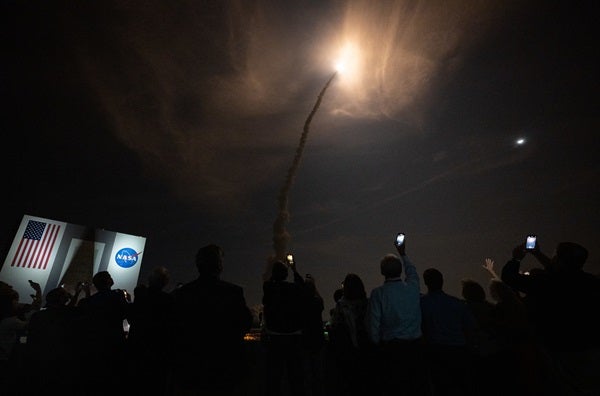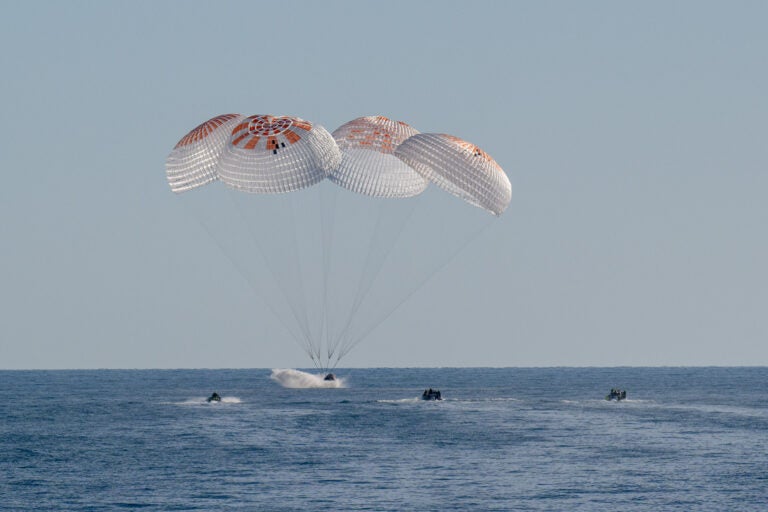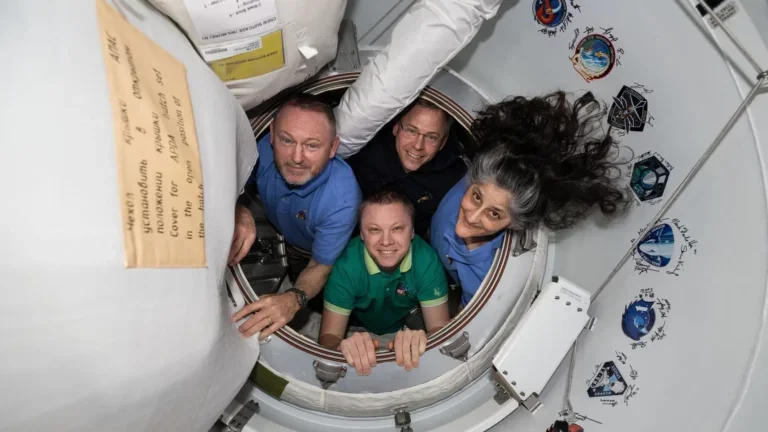Early this morning, NASA’s Space Launch System (SLS) tore through Earth’s atmosphere to kickstart the Artemis 1 mission, an uncrewed spaceflight that will test the technology needed to send humans back to the Moon for the first time in 50 years. However, it took some doing to get the SLS off the ground.
This summer and fall featured a start-and-stop series of fuel loadings and test countdowns called the wet dress rehearsal (WDR). Eventually, the WDR yielded enough experience, data, and repairs to be called a success by NASA, but a prior SLS launch attempt on Monday, Aug. 29, still ended in a scrub.
After an exhausting several hours, NASA managers briefed the press that day, blaming the August scrub on several glitches, including a lightning delay that set back fuel loading, a tetchy hydrogen leak, and a valve problem. The main showstopper, however, was one of the core stage’s main engines not cooling to the temperature required for launch. And even if all that had been resolved, there were weather complications during the launch window that would have stalled the attempt anyway.
On Saturday, Sept. 3, a new leak occurred while loading SLS’s supercooled liquid hydrogen fuel, and engineers had to change procedures to try to get the leak to self-seal. (Hydrogen is the smallest atom, and it wants to escape closed systems with alacrity.) The rocket’s second launch attempt in early September was again scrubbed.
While SLS remained on the launch pad, NASA then took to fixing the hydrogen leak — which may have been caused by a mistaken command that overpressurized the system. The agency also had to wait for military approval to extend the certification of a battery that charges the rocket’s self-destruct system, which exists to prevent a mishap from threatening Florida’s populated coast. This certification was extended through to today (Nov. 16).
More difficulties plagued the SLS into the fall. But in September, NASA finally met its objectives of loading the rocket’s troublesome fuel system ahead of a planned Sept. 27 launch window. Then came the threat of Ian, a tropical storm turned hurricane, which forced NASA to waive off the launch window and send the stacked rocket back to the safety of NASA’s Vehicle Assembly Building (VAB).
Fire in the hole
While presumed safe at VAB, the drama continued for SLS: A small fire broke out but did not affect the rocket. And fortunately, Ian did not damage the launch pad either.
In October, NASA began aiming for a November launch. Inspections, equipment replacements, and check-outs continued, including recharging what CubeSats could be recharged. (There are several small satellites on the rocket, some able to be recharged, others not.) Batteries on the second Interim Cryogenic Propulsion Stage were also replaced.
Shooting for a Nov. 14 launch, the rocket was rolled back to the pad, only to have Hurricane Nicole arrive shortly after. This time, though, the rocket stayed outside, and the launch window was pushed to the early morning hours of Nov. 16.
Prior to launch, NASA engineers found that some caulking on the Orion launch-abort rocket had came loose. NASA evaluated the risk of some of this material falling off and hitting other parts of the SLS, but engineers concluded the rocket could safely take off sometime during its two-hour launch window. At this point, it does not appear the loose material affected the health of either the SLS or Orion.
Artemis mission manager Mike Sarafin said that there are four objectives for Artemis 1:
- Demonstrate the Orion capsule can safely reenter Earth’s atmosphere;
- Prove the rocket and Orion can withstand their environments and events;
- Retrieve the Orion capsule and recover its data;
- And perform “payload objectives,” ranging from launching CubeSats to capturing Orion selfies and other photography.
Artemis 1 is the first mission of the new Artemis Program, named for Apollo’s twin sister. Assuming all goes well, during Artemis 2, NASA plans to send humans around the Moon in 2024. Artemis 3 will then land the first woman and the first person of color on the Moon in 2025. However, many believe this ambitious timeline is bound to experience further delays.










